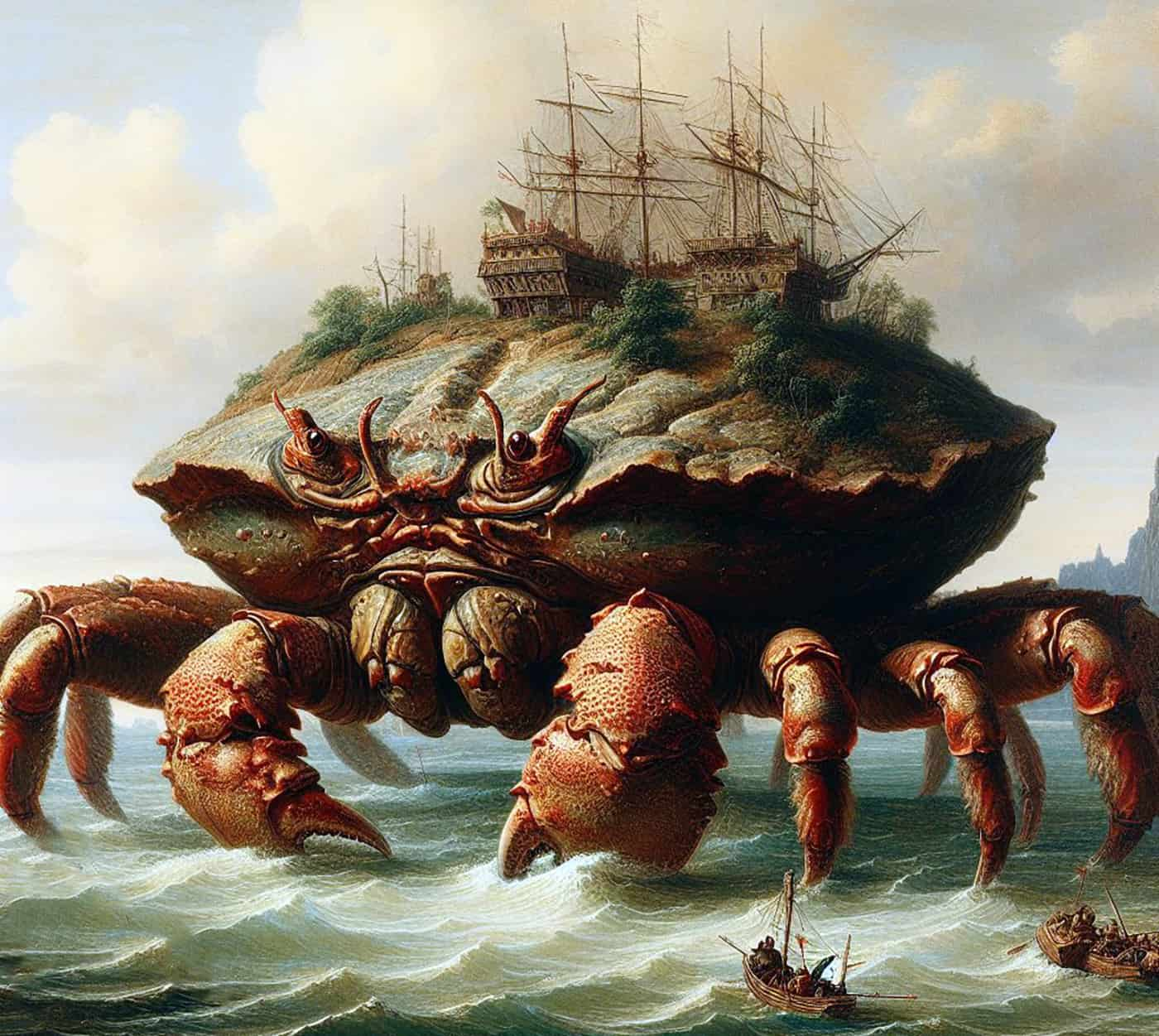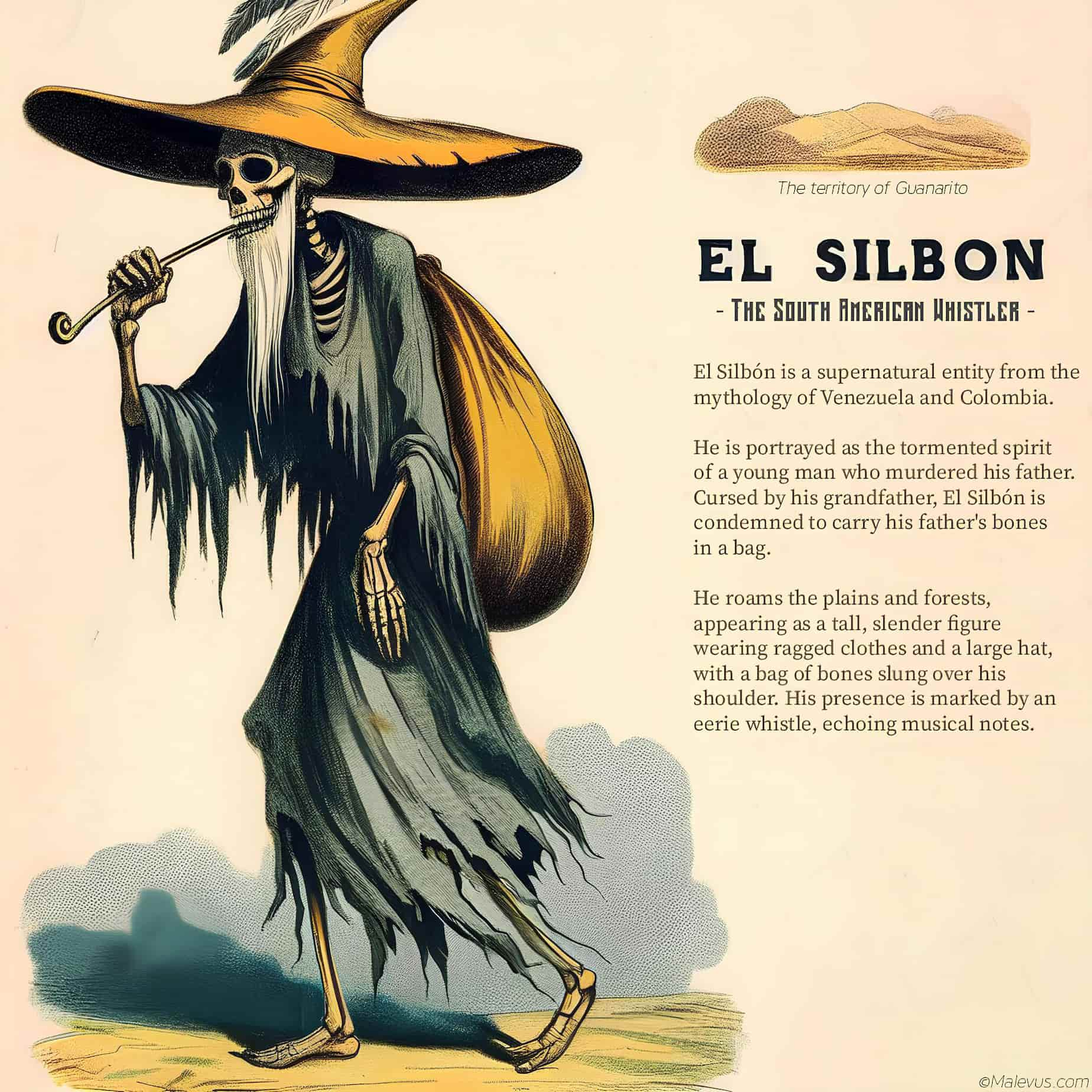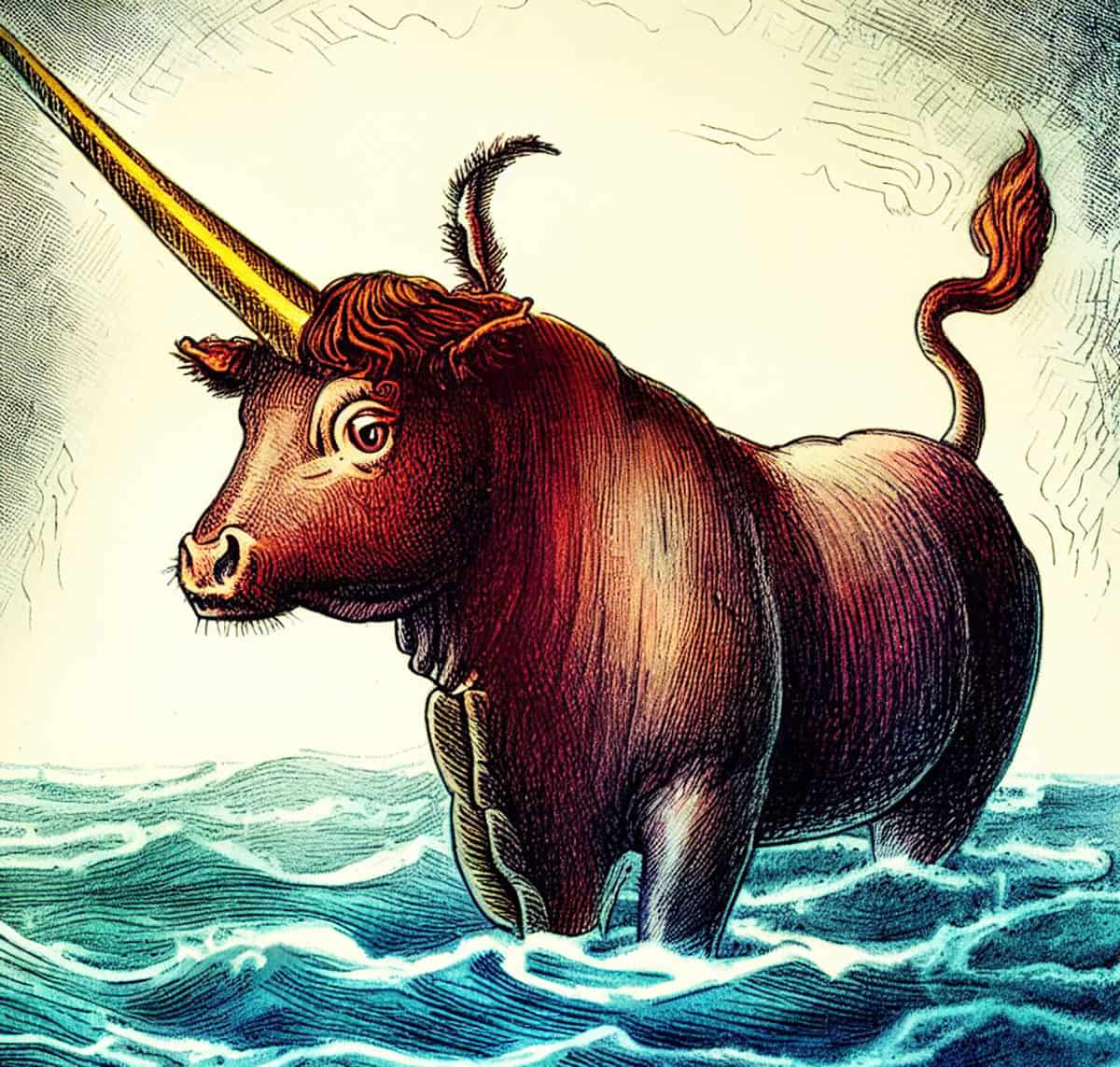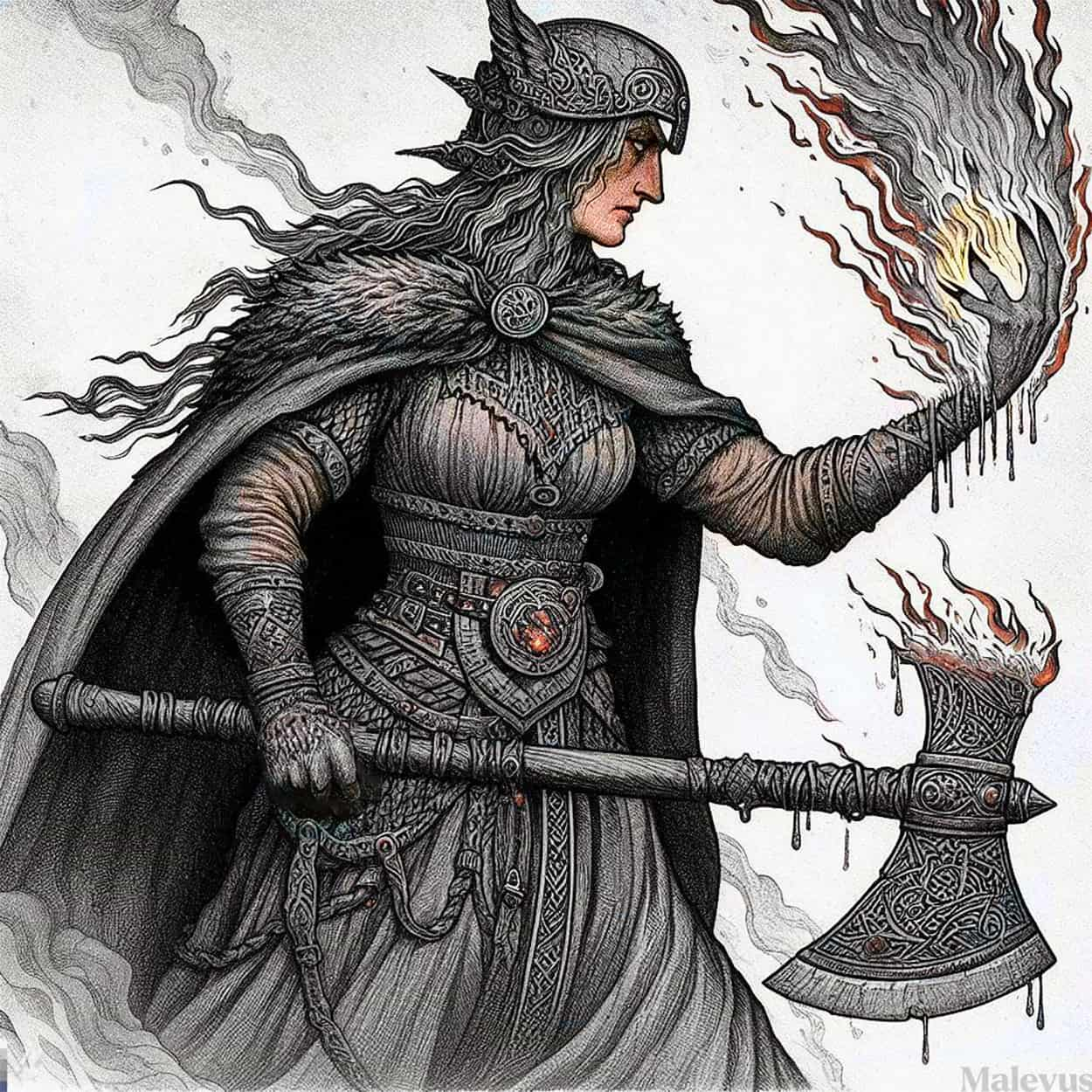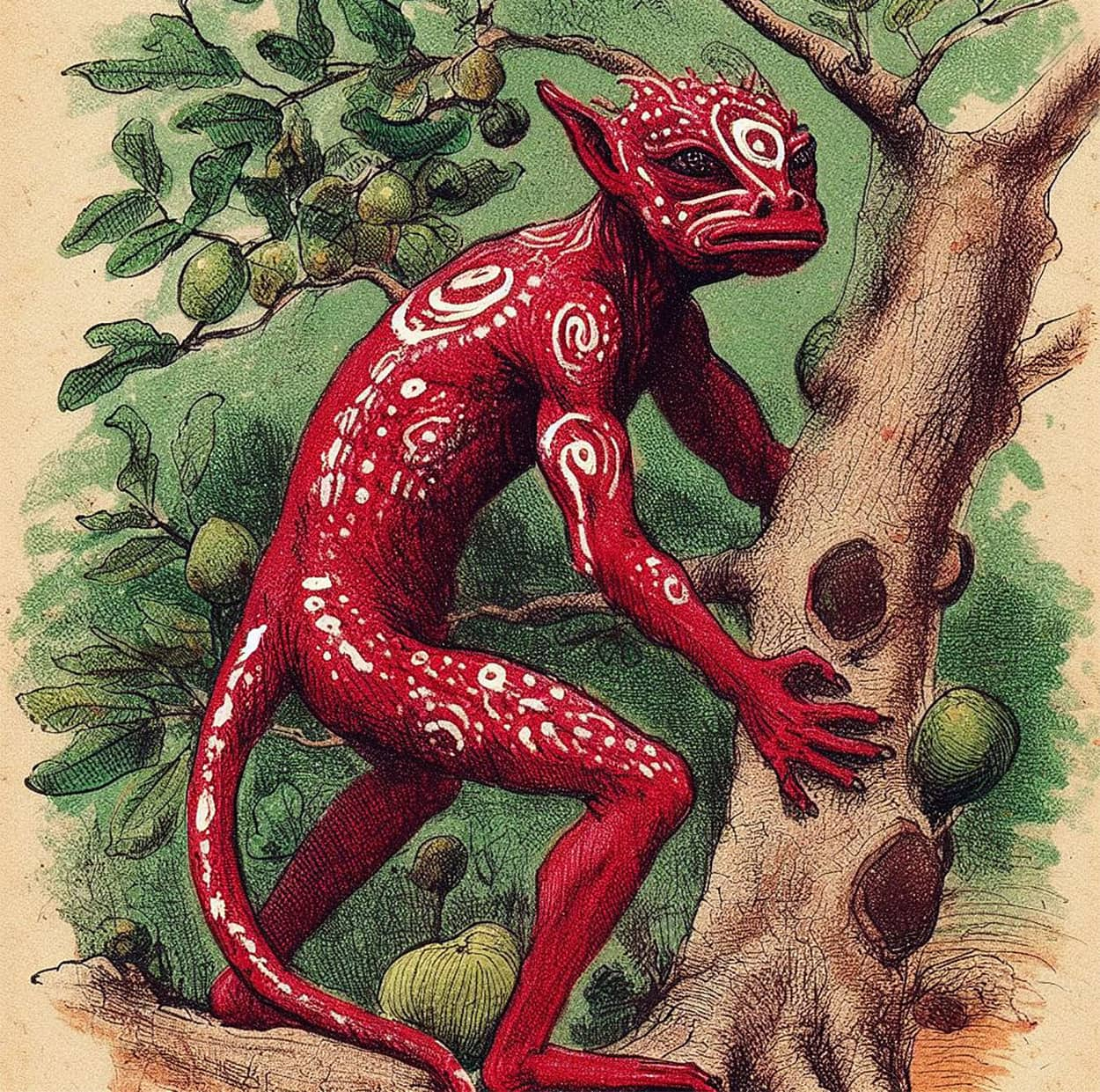- Zaratan myth originates from Arabic literature, blending crab and turtle.
- Al-Jahiz referred to Zaratan as a marine wonder.
- The creature appears in Dungeons and Dragons and video games.
Zaratans, also known as Saratan in Latin, are giant turtles or crabs whose backs resemble islands on the ocean’s surface. The 9th-century Arabic book Kitāb al-Hayawān (The Book of Animals) includes a description of Zaratan. It is one of the “World Turtle” myths, such as the “Turtle Island” myth among the Indigenous North American people. The tales of sailors mistaking a giant animal for an island and landing on it, only to discover it’s alive and moving, is a widespread myth around the world.
The Zaratan Myth
The Zaratan myth’s beginnings are obscure, although they seem to lie in literature or mythology. Zaratans were first mentioned by the Arab writer and zoologist Al-Jahiz (776–869) in his work “The Book of Animals.” “Saratan” is actually the Arabic word for “crab.” Al-Jahiz was familiar with crabs. He said that they are eight-legged, have two “teeth,” and have eyeballs at the rear of their heads. Crabs inhabit water or shoreline burrows, place their eggs there, and feast on other creatures out of gluttony.
The Zaratan is believed to be a Middle Eastern legend.
However, one crab al-Jahiz mentioned is different.
This particular crab dwells thousands of feet below the surface of the ocean. Its back is covered with vegetation while it relaxes on the water’s surface. Its shell has fissures and crevices that look like little canyons and rivers. Similar to other crabs like this, it disappears into the depths as soon as you set foot on it, taking with it all of your possessions.
This enormous fictional turtle or crab is also mentioned in the 13th-century work “The Wonders of Creation” by Persian scholar Zakariya al-Qazwini. There’s a tale of sailors landing on what they thought was a lush island, but it was actually Zaratan. They unwittingly awakened it with their campfire’s heat.
“What is the most incredible thing you’ve ever seen?” was the question Al-Jahiz and his companions discussed. People heard things like “soul,” “fire,” “forgetfulness and memory,” and “the womb of the cosmos.” One of the scholars thought that an elephant was the most remarkable thing ever. Next, Ma’bad bin Omar said, “Zaratan and the ostrich are greater wonders than the elephant.”
Al-Jahiz expanded on this theme elsewhere, saying that “the greatest of God’s creations are snakes, Zaratan, and fish” and “the greatest animals are fish and Zaratan.”
How Zaratan Turned Into a Turtle
Argentine essayist and short story writer Jorge Luis Borges (1899–1986) made reference to this beast. Borges, in his Book of Imaginary Beings, cited a passage from “The Book of Animals” by Al-Jahiz, translated into Spanish by Arabic scholar Miguel Asin Palacios. However, Palacios omitted the segment mentioning the Saratan being a marine crustacean.
Despite the transliteration “Saratan” being used, Borges used “Zaratan” since the letter S before vowels may represent a sound close to Z.
Furthermore, in the Zaratan entry of the Book of Imaginary Beings, it introduces not only Saratan but also sea turtles and the great fish Jasconius from “The Legend of Saint Brendan.” These factors converged, leading to the conception of Zaratan as a gigantic turtle instead of a gigantic crab.
When Borges failed to indicate this fact, the animal has also been misinterpreted as a turtle in later works, as seen in the “Dungeons and Dragons” board game.
As Seen in the Media
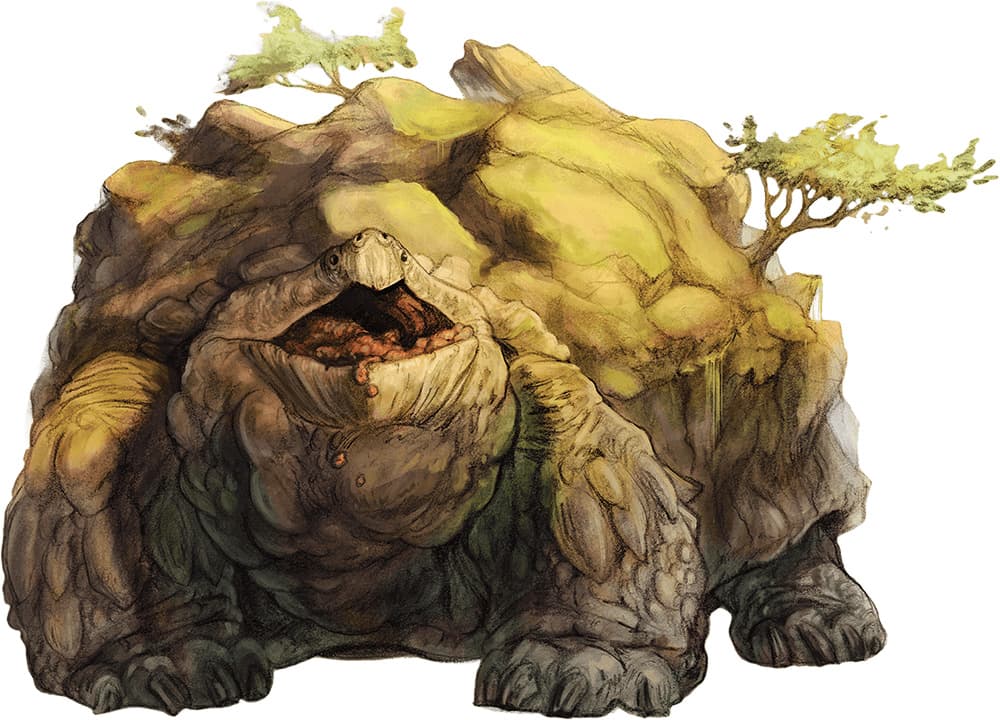
The Dungeons and Dragons tabletop game has Zaratans in several of its versions. Their stomping creates shockwaves that travel 120 feet into the earth, making them a unique unit. They can throw chunks of stone from their jaws and sprint very quickly, but they will return inside their shells if they are seriously injured.
In the World of Warcraft: Mists of Pandaria video game, The Wandering Isle zone is a giant sea turtle in the form of a land.
Romancing SaGa, a 1992 role-playing video game, features this animal, as well as the Digital Devil Story: Megami Tensei II, another Japanese RPG released in 1990.


